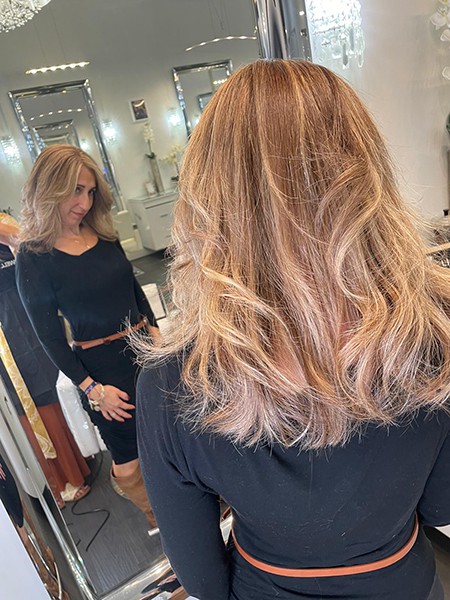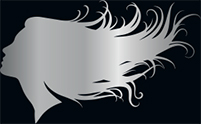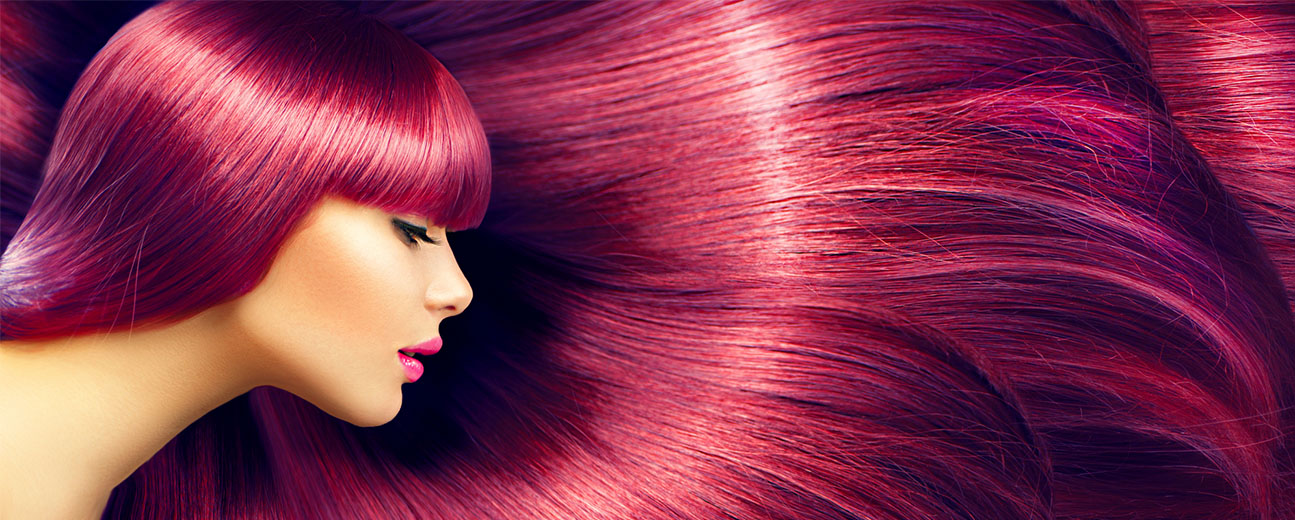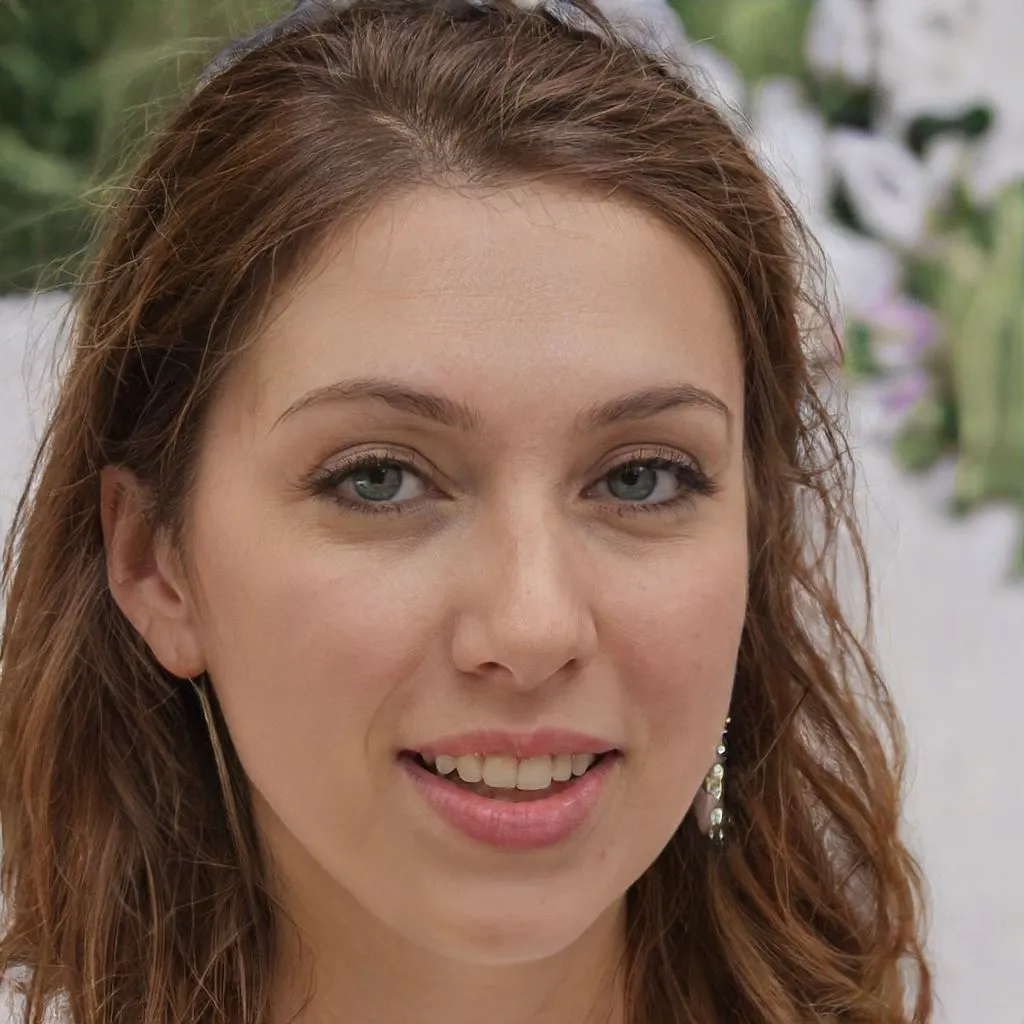Among the many different hair colouring styles, two of the most popular options are Ombré and Balayage. But many are unsure what the two styles really are, so this blog will look at the differences between the two styles.
Table of Contents
What Is Balayage Hair?
Balayage is the French word for “sweeping.” In this hair coloring technique, highlights are hand-painted onto the hair’s surface in a sweeping motion, hence the name. The color application begins at the roots and increases the further it travels down the section, with the heaviest application of the colour or lightener at the ends. This technique creates a more graduated, natural effect as the underside of the hair remains darker. It also adds dimension, just like traditional highlights, making it a great choice to make thin hair appear fuller.
As the darkest parts are toward the roots of your hair, balayage highlights last longer and don’t require frequent touch-ups as the colour naturally grows out without any harsh colour separation, making it cost-effective. Fewer touch-ups and applications generally mean that balayage is less damaging to the hair, which is another big plus.
Typically, balayage can be applied to any hair color, from blonde to red to brown, but usually, it is not regarded as the first choice for really dark brunettes.
What Is Ombré Hair?
Ombre is French for “shadow” or “shade.” This technique creates a more dramatic effect, with the hair staying darker at the top and then getting lighter at the bottom. Generally, the darker shades fade into blonde down the length of the hair, making it look like the natural color change you usually experience during summer.
Like Balayage, the fact that the darker shades are toward the roots allows for a natural grow-out without clashing colors. That being said, Ombré is more damaging than balayage due to the use of bleach at the ends to achieve the full blond effect, so for someone with dry or fragile hair, this might not be the best option. It is best on virgin or previously lightened hair, as hair with existing permanent color could see more damage.
It also is easy on the budget as it doesn’t require many touch-ups. An ombré hairstyle can be any color combination, from the traditional blonde, brown, or red to more unconventional combinations with purple, blue, pink, or green.
What is the difference between balayage and ombre?
| Balayage | Ombré |
| A freehand style of hair coloring where color is applied in a sweeping motion without using foils. | A gradient effect where one color gradually fades into another. |
| Creates a natural sun-kissed look that fades softly from roots to ends. | Typically darker at the roots and gradually lighter towards the ends. |
| Uses multiple shades of color to give the hair depth and dimension. | Can be bold or natural-looking, depending on the color choices. |
| Offers a low-maintenance style that requires fewer touch-ups. | Requires more upkeep to maintain the contrasting colors. |
Which is better for me, ombre or balayage?
Ultimately, the answer to this question depends on your style and which look you are going for. Here are some factors to consider to help you make a decision:

Naturalness
Balayage creates a more natural look than ombré, as the color is applied in a sweeping motion that mimics how hair naturally lightens in the sun. Balayage might be a better choice if you want a more subtle and natural effect.
High-contrast
If you want a more dramatic and high-contrast look, ombré might be a better choice. Ombré creates a more visual contrast between the shades of color and has a more defined transition line between the two tones.
Maintenance
Balayage is a low-maintenance option that doesn’t require frequent touch-ups or upkeep. Ombré, on the other hand, can require more maintenance to maintain the contrasting colors and the defined line between them.
Face Shape
Balayage can be customized to flatter individual features of the face, while ombré is a more uniform look. Balayage is a more hand-painted form, while ombré is a gradual and consistent pattern.
How can I make my ombre or balayage last?
If you’ve decided to go for an ombre or balayage style, there are several things you can do to ensure your new look lasts as long as possible. Here are some tips to help preserve your color:
Make sure to use sulfate-free shampoo and conditioner. Sulfates, found in many shampoos and conditioners, can strip the color from your hair. Sulfate-free products, on the other hand, are gentler and less likely to cause fading.
Hot water can also strip the color from your hair, so try to use warm or cool water when washing your hair. This will help preserve your color for longer.
The more often you wash your hair, the more quickly the color will fade. Try to shampoo your hair only 2-3 times a week to maintain the color.
A wide range of color-protecting products is designed to protect and preserve hair color. Look for products with UV protection, as UV rays can also cause color to fade.
You may need touch-ups every 6-8 weeks depending on your hair growth. This will help to keep your color looking fresh and vibrant.
Heat styling tools can damage your hair and cause color to fade more quickly. If you must use a hair dryer, curling iron, or straightener, use a heat protectant product first.
How to Pick the Right One for You?
Typically, it’s not a matter of one versus the other, depending on your desire. Balayage might be the right choice if you are going for a more natural and dimensional look. On the other hand, ombré is a better option if you’re looking for something bolder with more gradient.
Contact VIP Hair Salon
VIP Hair Salon is a professional full-service hair salon in Boca Raton, FL. Contact us today at (561) 808-2788 to schedule a consultation with one of our expert stylists. They can give expert advice on whether balayage or ombré is the right style for you.
FAQs
Ombré is a better option if you want something bolder with more gradient.
Balayage might be the right choice if you are going for a more natural and dimensional look.


